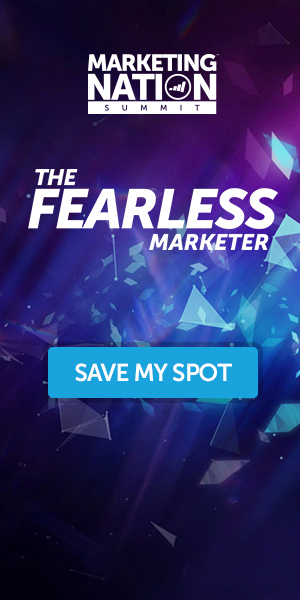In the modern world, insurance is an integral part of our lives, providing us with financial security and peace of mind in times of uncertainty. But have you ever wondered about the origins of insurance and how it has evolved over centuries? The concept of mitigating risk through collective agreements dates back to ancient civilizations, and the journey of insurance is a fascinating testament to human innovation and adaptability.
Ancient Beginnings: Mutual Aid and Collective Responsibility
The roots of insurance can be traced back to ancient societies that practiced forms of mutual aid and collective responsibility. In these close-knit communities, individuals would come together to support one another in times of crisis, such as natural disasters or unforeseen accidents. While these arrangements lacked the sophisticated structures of modern insurance, they laid the foundation for the concept of sharing risks and burdens.
In Babylonia, around 1750 BC, merchants would pool resources to protect themselves against the risks of trading ventures. This practice resembled a rudimentary form of marine insurance, where the loss of goods during sea voyages was distributed among the contributing merchants. Similarly, ancient Greek and Roman societies had burial societies that collected funds to cover funeral expenses for members, demonstrating the emergence of insurance-like principles.
Marine Insurance and the Birth of Formal Contracts
The evolution of insurance took a significant step forward during the Age of Exploration when trade routes expanded and maritime commerce flourished. In the 14th century, the city of Bruges established one of the earliest known marine insurance marketplaces, where merchants could purchase coverage against losses incurred during long and perilous sea journeys.
Marine insurance marked the transition from informal mutual agreements to formal contracts. These contracts outlined the terms and conditions of coverage, laying the groundwork for the legal framework that modern insurance relies upon. With time, insurance contracts evolved to cover not only goods lost at sea but also property and other valuables, reflecting the growing complexity of economies and risks.
The Rise of Modern Insurance Companies
The 17th century witnessed the establishment of some of the first insurance companies, marking a pivotal moment in the evolution of insurance. In 1688, Edward Lloyd’s coffee house in London became a hub for maritime insurance, attracting underwriters who would assess risks and provide coverage for a fee. This laid the foundation for the Lloyd’s of London market, which still operates as a leading insurance institution today.
As industrialization transformed societies, new risks emerged, prompting the expansion of insurance beyond maritime concerns. Fire insurance came into prominence in the late 17th century, with companies offering policies to protect against the devastating impact of urban fires. The Great Fire of London in 1666, which destroyed a significant portion of the city, underscored the need for such protections.
20th Century Innovations and Beyond
The 20th century brought remarkable innovations to the insurance industry, reshaping how risks were assessed, managed, and shared. Actuarial science, powered by advanced mathematics and data analysis, revolutionized risk assessment by enabling insurers to predict and quantify potential losses more accurately. This paved the way for a wider range of insurance products and more precise pricing models.
The introduction of life insurance and health insurance further diversified the industry. Life insurance, which had existed in various forms for centuries, gained new prominence with the expansion of financial services. Health insurance evolved in response to the rising costs of medical care, providing individuals with a safety net against the financial burden of illness and injury.
Insurance in the Digital Age
In recent decades, the digital revolution has transformed every aspect of our lives, including insurance. The advent of the internet and sophisticated data analysis tools has enabled insurers to streamline operations, enhance customer experience, and develop innovative products. Customers can now compare policies, purchase coverage, and file claims online, making the insurance process more accessible and convenient.

The concept of telematics has led to usage-based insurance models, where factors such as driving behavior can directly influence premium rates. This not only encourages safer behaviors but also personalizes insurance offerings based on individual habits and choices.
Embracing the Future with AI and Automation
As we stand on the brink of the future, artificial intelligence (AI) and automation are poised to redefine the insurance landscape once again. AI-powered chatbots and virtual assistants are becoming commonplace, providing customers with instant support and personalized recommendations. Claims processing, traditionally a time-consuming task, is being expedited through automation, reducing paperwork and improving efficiency.
Predictive analytics, driven by AI, enables insurers to anticipate trends and risks more accurately. This not only benefits the industry but also allows for more proactive risk management and prevention strategies. For example, insurers can work with policyholders to reduce risks based on data insights, ultimately creating a safer and more resilient society. For more insights and further information about the evolution of insurance, be sure to visit Lake Region Insurance Agency to learn more.
Conclusion
The evolution of insurance is a remarkable journey that reflects our ability to adapt to changing circumstances and needs. From humble ancient pacts of mutual aid to complex, AI-driven insurance ecosystems, the industry has come a long way. As risks continue to evolve and new challenges emerge, the insurance sector will undoubtedly remain at the forefront of innovation, finding novel ways to safeguard our futures and provide the stability we all seek.













